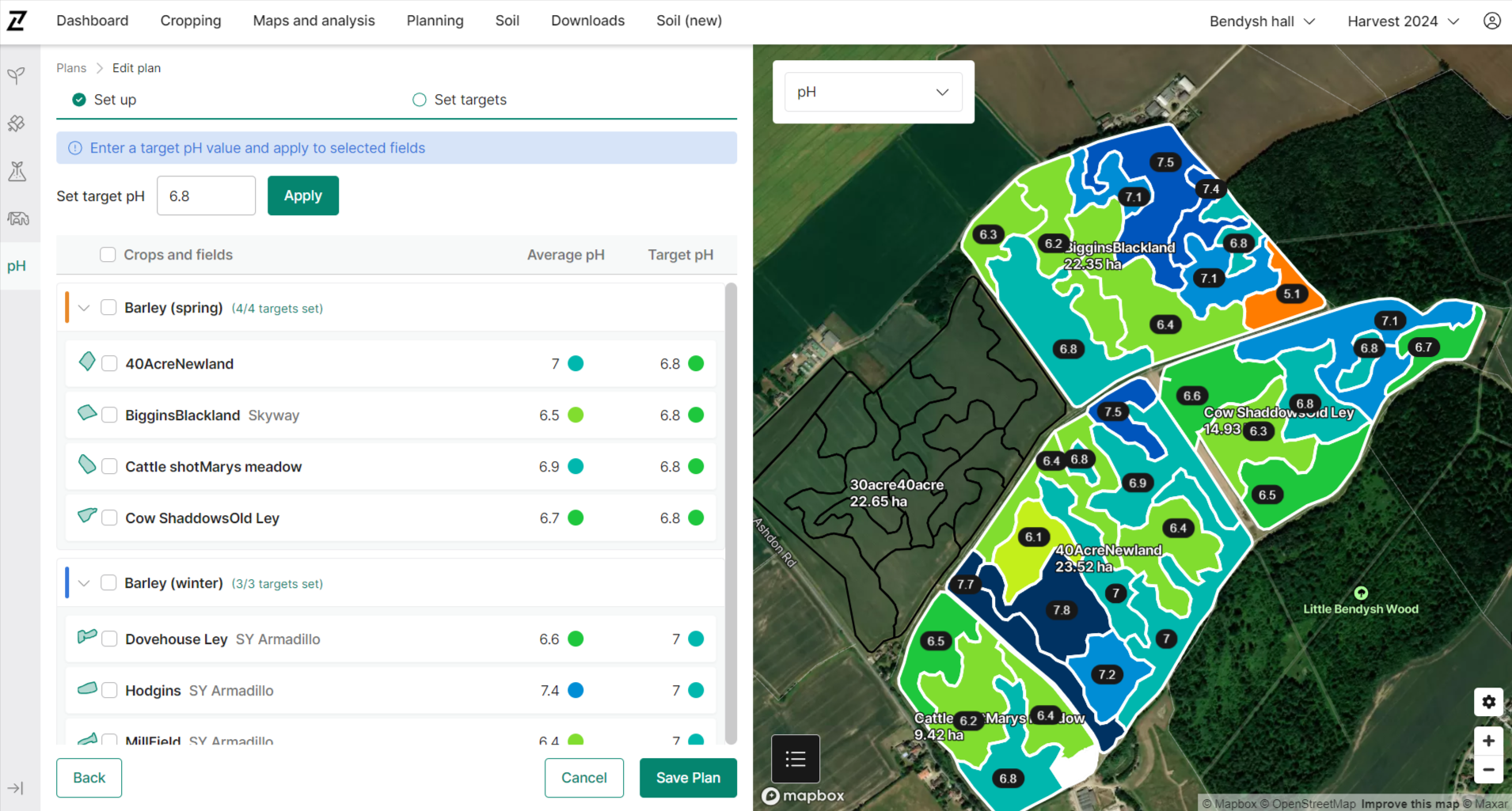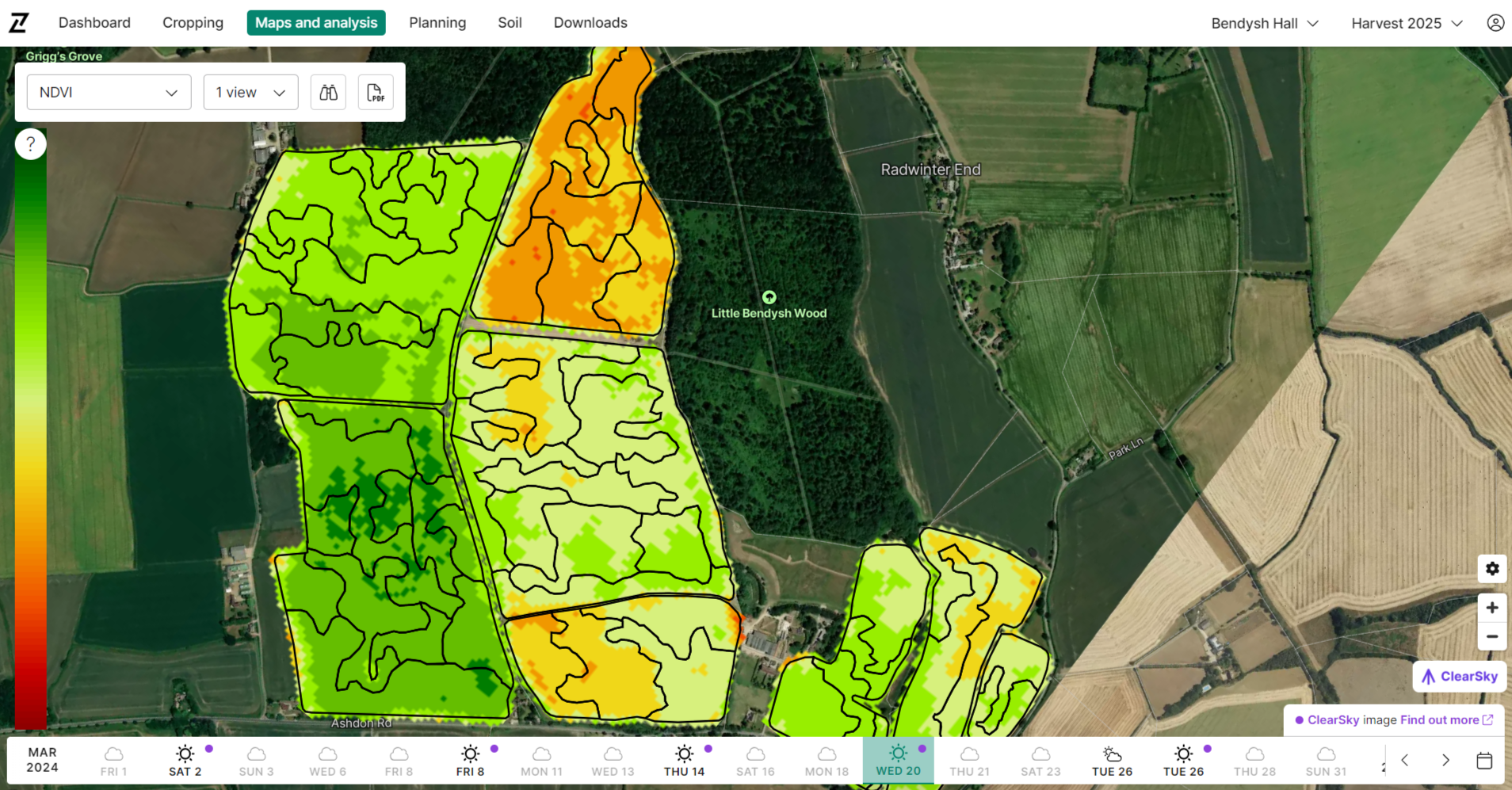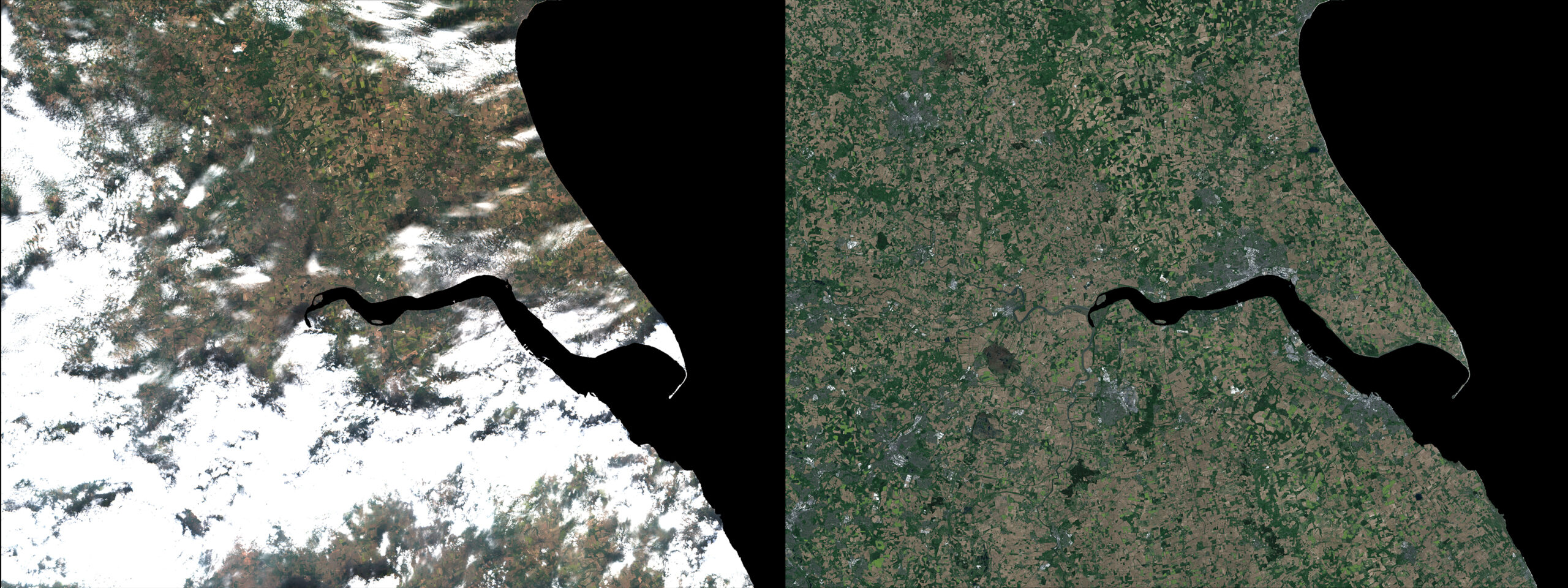Supporting SFI Success with ClearSky Imagery
11
NOVEMBER, 2024
News
The use of data from soil analysis carried out in previous seasons is sufficient for variable rate lime and P and K applications, as pH values and soil indices typically do not change significantly during the season. However, this is not the case for variable rate nitrogen.
Nitrogen requirements depend on the crop situation and the available soil reserves following winter. Therefore, the PRF1 action stipulates that when remote sensing is used to calculate the nitrogen requirement, it must be carried out no more than 14 days prior to application.
The above-average rainfall and heavy cloud cover during spring 2024 meant that those relying on optical imagery from the Sentinel-2 satellites struggled to obtain images of sufficient quality to meet the PRF1 action. Around 80% of the imagery produced was rejected.

Soil pH values can be displayed as a list and colour-coded map in RHIZA Lime Planner
The only source of guaranteed cloud-free imagery that meets the SRF1 action requirements is ClearSky. It provides high accuracy through full-spectrum optical and infrared imagery, including NDVI and GCVI from synthetic-aperture radar (SAR) – see Figure 4. Unlike Sentinel-2, SAR imagery does not require a clean line of sight and is unaffected by cloud cover.

A ClearSky image showing NDVI values needed to support a variable rate application file
This breakthrough technology ensures that farmers using ClearSky receive crop development imagery every six days, regardless of weather conditions, as SAR data is not hindered by clouds. Unlike other ‘cloud-free’ solutions, ClearSky does not rely on sporadic clear optical imagery for calibration. This provides greater confidence in the data supplied to customers.
Analysis by Agrii, covering 900,000ha, revealed that the Sentinel-2 system produced an average of 13.3 clear images per farm in 2023. In comparison, the ClearSky platform increased this number to 60.8, which improves even further when including cloud-free images captured by Sentinel-2.
Adopting technology that enhances the performance and resilience of agriculture is a key objective of the SFI. Demonstrating compliance with its actions goes beyond a simple tick-box exercise. Participants are expected to show they are fulfilling the required actions on demand. In some cases, this means providing a report; in others, it requires producing the actual data used to fulfil the task. ClearSky ensures that variable rate applications align with crop needs while making it easier to demonstrate compliance with the PRF1 action.

Clearsky comparison over the River Humber
